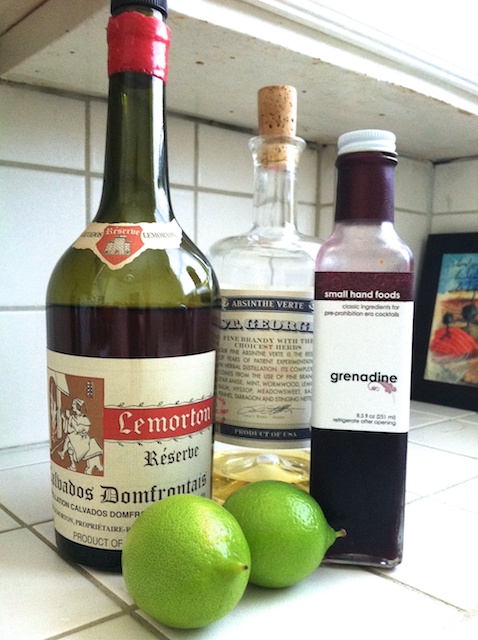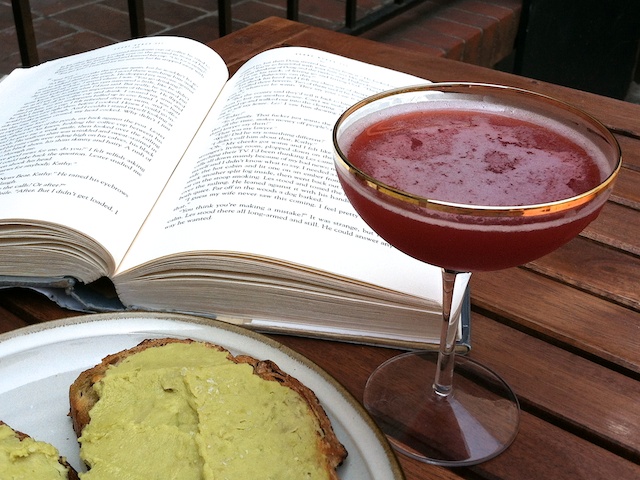Applejack of All Trades

Have you ever heard the phrase, "Jack of all trades, master of none"? That's me. In high school, I was good enough to make the baseball team, soccer team, water polo team, tennis team, and football team, but I was never talented enough to actually make it into a game. I would sit on the bench, knowing that I was a part of the group, but that's about all the playing I ever did.
In the realm of home cocktail mixing, I feel like many people apply this same type of broad, sweeping discipline – one that briefly touches on a number of things without any true mastership. We make a drink, try it out, and then move on to something else, when we would perhaps be better served by taking one or two classic cocktails and focusing on doing them right, tweaking them, experimenting, and ultimately finessing their creation. That's what our friend David A. Embury believed, the opinionated author of The Fine Art of Mixing Drinks. He once wrote:
The average host, who makes no pretense of being an expert on liquors, can get along very nicely with a knowledge of how to mix a half dozen good cocktails. In fact, if he can make only two or three and always makes them well he will stand much higher in the regard of his guests than will the indiscriminate chop-suey dispenser who throws together a little of everything that chances to be laying around loose with no regard whatsoever for the basic function to be performed by each ingredient.
That sounds like the old me – never wanting to take the time to learn how to do something well, just wanting to know enough to say that I can. However, one day I decided that the old me was kind of an incompetent mess who was in need of a little discipline. I decided to master the six cocktails on Embry's list and learn how each component functioned in the mix. Once understanding the formulae, I would be able to mix and match ingredients to create a number of spin-offs and plays on the old hits.
Embry lists the Martini, Manhattan, Old-Fashioned, Daiquiri, Sidecar, and Jack Rose as his basic six. However, since we all know how to make a Martini, and I don't feel like drinking sweet Bourbon when it's 100 degrees outside, let's scrap those two for today. We've already covered the Daiquiri in the past with a super three-part post, so let's scratch that. How about a Jack Rose? When's the last time you made one of those?
Embry writes: "...the principal reason that apple brandy has not gained a greater favor with the drinking public is the fact that is is sold well before it is well aged. I venture to say that if some enterprising distiller would put out an apple brandy made with the same loving care as Cognac and aged in wood for ten, twenty, or even forty years, it would soon rival grape brandies in popularity, especially for use in mixed drinks.
Unfortunately, Mr. Embury, we've now reached that stage in the booze business where great Calvados is available around the world, but it hasn't tempted the general public to the level with which you once predicted. Nevertheless, great apple brandy cocktails are definitely overlooked, especially the Jack Rose. How does once make a Jack Rose, though?

David A. Embury's Jack Rose De Luxe
1 part Grenadine (1/4 oz)
2 parts Lemon Juice (1/2 oz)
8 parts Apple Brandy (2 oz)
Shake vigorously with plenty of cracked or crushed ice and strain into chilled cocktail glasses. A twist of lemon may also be used and the peel dropped into the glass if desired.
The great part about mastering the Jack Rose cocktail, or any cocktail, is that you can learn what you do and don't like about it. You may simply discover that you want to use cherry liqueur instead of grenadine, or lime juice instead of lemon juice. Personally, I like doing it the way they do at the Slanted Door in San Francisco, by adding a bit of simple syrup and absinthe into the mix.
David's Jack Rose Adaptation (play on the Pan-American Clipper by Erik Adkins)
2 oz. Apple Brandy (Lemorton Reserve Calvados)
1/2 oz. Small Hand Foods Grenadine
1/2 oz. lime juice
1/4. oz. simple syrup
dash of absinthe
Pour ingredients into a cocktail shaker, shake vigorously with plenty of ice, double strain into a glass.
Now it's time to sit outside on the patio, eat my lunch, and read my book.
-David Driscoll
